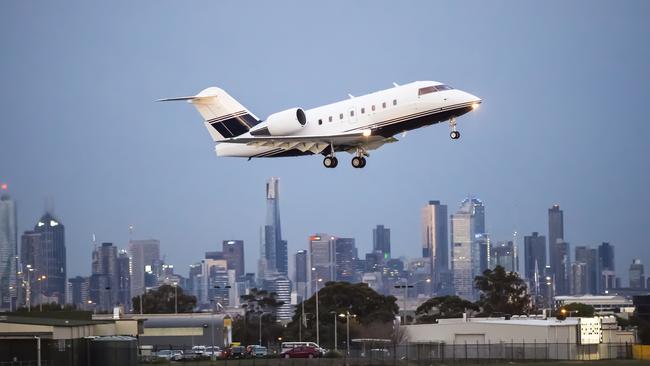‘Flying offices’ seen as productive transport
Business jet buyers evaluate an aircraft in the same way they would scope other equipment: as a productivity tool that must earn its keep.

Business aviation has had a bad rap from campaigners seeking a poster child for corporate largesse.
But while the casual observer may see these sleek aircraft as the toys of the rich and famous, business-jet buyers evaluate an aircraft in the same way they would scope a new IT system, manufacturing equipment or facility: as a productivity tool that must earn its keep.
According to figures from the US National Business Aviation Association (NBAA), less than half of business aviation flights are carrying top management.
The world’s major business aircraft manufacturers will bring a squadron of sleek-winged “time- management tools’’ to Avalon 2019. French manufacturer Dassault is bringing its long-range 2000LX twin, and the flagship three-engine 8X, a big-cabin aircraft capable of whisking eight passengers from Sydney to Asia, India, Japan or North or South America non-stop.
Australia's Airflite will also present on the flight line with a King Air B200, Dassault Falcon 2000 and the turbine Quest Kodiak utility aircraft.
The industry’s best will also be represented across the scale, from Daher’s six-passenger TBM900 turboprop single to the long-range heavy iron of Gulfstream’s globetrotting G650ER, with a range just shy of 14,000 kilometres, alongside its G550 and G600 siblings.
They bookend a flight line that includes the Pilatus PC-12 and the Swiss company’s new PC-24 “Super Versatile Jet”, ground- breaking in its standard large cargo door and in being designed from the start to be capable of operating from unprepared airstrips (both strong factors in Australia’s Royal Flying Doctor Service signing up as launch customer). Avalon 2019 will be the PC-24’s Australian airshow debut.
Textron will field a Caravan utility turboprop and the ever-successful King Air 250 turbine twin, plus two business jets, the Citation CJ3 and larger Latitude, famed for its wide, stand-up flat-floor cabin.
Brazil’s manufacturer Embraer, recently celebrating its 40th anniversary in Australia, will land with the Phenom 300 entry-level business jet and its fly-by-wire midsized Legacy 500, with a 12-place interior including seats than can become lay flat beds.
Survey information from the NBAA’s “No Plane No Gain” program suggests the average business-jet flight is about delivering key employees to solve business-critical issues or to reach destinations not efficiently covered by scheduled airlines, rather than providing a five-star perk.
The average passenger is more likely to be part of a major project team, customer-service personnel flying to solve a major client’s issue (where timely intervention can protect contracts worth millions of dollars) or even components or tools that are too bulky or valuable to risk on normal cargo flights.
It’s also about efficiency. NBAA figures show 42 per cent of business flights are flown to towns with little or no airline service and 80 per cent are to airports in small towns and communities. In the US business jets can fly to 5000 airports, while airlines service 500. More than 40 per cent of flights also include multiple destinations in a single day, maximising productivity from key personnel in a way scheduled airlines simply can’t match.
On a company aircraft employees can meet, plan and work en route and discuss proprietary information in a secure environment.
Add the anonymity of business-jet operations from smaller airports, the ability to more closely control security and the veritable “office in the sky” connectivity from modern communications technology and the average business jet is less airborne hotel suite and more flying office.
Philip Smart is executive manager, corporate communications, Aerospace Australia Ltd






To join the conversation, please log in. Don't have an account? Register
Join the conversation, you are commenting as Logout